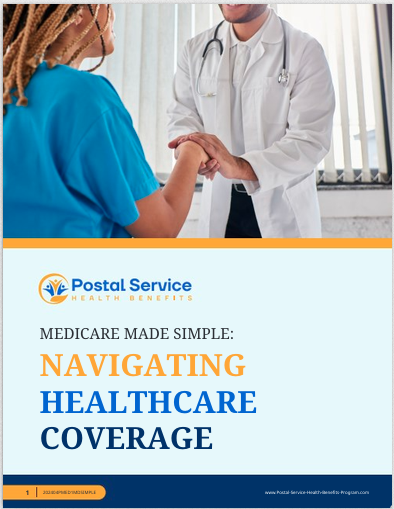Key Takeaways:
-
Starting January 1, 2025, the Postal Service Health Benefits (PSHB) program replaces FEHB for USPS employees and annuitants, requiring careful review and enrollment decisions.
-
Medicare-eligible retirees must understand how Medicare integration impacts their PSHB plan options and potential cost savings.
Understanding the PSHB Transition
The shift to the Postal Service Health Benefits (PSHB) program marks a significant change for USPS employees, annuitants, and their families. Starting January 1, 2025, PSHB plans will replace the Federal Employees Health Benefits (FEHB) program for postal workers. This change affects coverage, premiums, and integration with Medicare for those eligible.
You’ll need to understand the options available, what actions are required, and how to maximize your benefits under PSHB. Let’s break it down step by step.
Who Is Affected by the Change?
If you’re a current USPS employee, retiree, or family member covered under FEHB, you’ll need to transition to a PSHB plan. Here are the key groups impacted:
-
Active USPS Employees: You’ll need to enroll in a PSHB plan during Open Season to maintain coverage for 2025 and beyond.
-
Retirees: Medicare-eligible retirees must enroll in Medicare Part B to continue PSHB coverage, unless you meet specific exemption criteria.
-
Family Members: Dependents and spouses must also transition to PSHB plans, though existing coverage under FEHB will continue for non-Postal employees in your household.
Important Enrollment Deadlines
The 2024 Open Season for PSHB ran from November 11 to December 13. If you didn’t make changes during this period, your current FEHB coverage automatically rolled into the corresponding PSHB plan. You can make changes outside Open Season only due to Qualifying Life Events (QLEs).
Navigating Your PSHB Plan Options
PSHB offers a range of plans, so it’s crucial to evaluate your options carefully. Each plan includes varying levels of coverage for medical, vision, dental, and prescription benefits. Here are steps to guide your decision:
1. Review Your Health Needs
Assess your family’s health requirements, including:
-
Frequency of doctor visits
-
Prescription medication needs
-
Specialist care or chronic condition management
-
Desired access to specific networks or providers
2. Compare Plans
During Open Season, you should have reviewed the PSHB plan comparison tools to understand the differences in:
-
Premium costs
-
Deductibles
-
Co-pays and coinsurance
-
Out-of-pocket maximums
3. Check Medicare Integration
If you’re Medicare-eligible, coordinating Medicare with your PSHB plan can reduce overall costs. Many PSHB plans waive deductibles and provide premium reimbursements when paired with Medicare Part B.
Medicare Part B Enrollment: A Key Requirement
For many USPS retirees and family members, enrolling in Medicare Part B is mandatory to maintain PSHB coverage. Here’s what you need to know:
Who Needs to Enroll in Medicare Part B?
-
Annuitants and family members who become Medicare-eligible after January 1, 2025, must enroll in Part B.
-
Exceptions apply for those retired on or before January 1, 2025, or aged 64+ as of that date.
Benefits of Enrolling in Medicare Part B
Enrolling in Medicare Part B provides access to enhanced benefits under PSHB plans, such as:
-
Lower out-of-pocket costs
-
Additional coverage options for medical and prescription needs
-
Waived deductibles in some PSHB plans
Enrollment Periods to Remember
If you’re newly eligible for Medicare, you can enroll during:
-
Initial Enrollment Period (IEP): Begins 3 months before and ends 3 months after your 65th birthday month.
-
Special Enrollment Period (SEP): Triggered by loss of employer coverage or other qualifying events.
Failing to enroll on time can result in late penalties and higher premiums.
How Prescription Drug Coverage Works
Prescription coverage under PSHB integrates seamlessly with Medicare Part D for eligible retirees. Here’s how it works:
Employer Group Waiver Plan (EGWP)
Many PSHB plans include EGWP, a Medicare Part D option tailored for employer-sponsored health plans. EGWP benefits include:
-
Automatic enrollment for Medicare-eligible annuitants
-
Simplified access to lower-cost medications
-
Elimination of the “donut hole” gap in coverage
Non-Medicare-Eligible Members
For those not yet eligible for Medicare, PSHB plans continue to provide comprehensive drug coverage similar to FEHB.
Maximizing Benefits as a USPS Employee or Retiree
Taking full advantage of PSHB requires thoughtful planning. Here’s how you can optimize your benefits:
1. Understand Premium Contributions
The federal government continues to contribute significantly toward PSHB premiums, ensuring affordability for USPS employees and retirees.
2. Coordinate PSHB with Medicare
If eligible, pairing Medicare Parts A and B with your PSHB plan can:
-
Reduce overall healthcare costs
-
Provide access to a broader network of providers
3. Utilize Preventive Services
Most PSHB plans cover preventive services at 100%, including:
-
Annual wellness exams
-
Vaccinations
-
Screenings for conditions like diabetes or hypertension
4. Leverage Additional Benefits
PSHB plans may include supplemental benefits such as:
-
Vision and dental coverage
-
Hearing aids
-
Wellness programs and gym memberships
Preparing for the Transition
To ensure a smooth shift to PSHB, take these proactive steps:
Review Your 2024 FEHB Plan
Understand how your current benefits compare to the new PSHB offerings. Your Annual Notice of Change (ANOC) letter highlights modifications to premiums, benefits, and coverage.
Communicate with HR or Retirement Services
If you have questions or unique circumstances, your HR representative or retirement services office can provide personalized guidance.
Verify Eligibility for Dependents
Ensure all dependents meet the eligibility criteria under PSHB to avoid lapses in coverage.
Update Personal Information
Keep your contact details up to date with USPS and Medicare to receive important notices about your benefits.
Key Differences Between FEHB and PSHB
It’s essential to understand how PSHB differs from FEHB. While both programs offer robust coverage, PSHB is tailored specifically for USPS employees and retirees. Key distinctions include:
-
Medicare Integration: PSHB places a greater emphasis on coordinating benefits with Medicare for cost savings.
-
Plan Offerings: PSHB includes plans designed exclusively for postal workers, with benefits tailored to their needs.
-
Cost Sharing: Premium contributions, co-pays, and deductibles may differ from FEHB plans, so reviewing these changes is crucial.
Common Questions About PSHB
Here are answers to some frequently asked questions:
Do I Have to Choose a New Plan?
Yes, all USPS employees and retirees must enroll in a PSHB plan for 2025. Automatic enrollment applies only if you took no action during Open Season.
What Happens If I Don’t Enroll in Medicare Part B?
Failing to enroll in Part B when required may result in loss of PSHB coverage or higher costs.
Can I Keep My Current Providers?
PSHB plans generally offer extensive provider networks. However, it’s essential to verify that your preferred providers participate in your selected plan.
Why This Transition Matters
The move to PSHB represents an opportunity for USPS employees and retirees to access tailored health benefits, often with enhanced features compared to FEHB. By understanding your options and taking proactive steps, you can ensure comprehensive and cost-effective healthcare coverage for yourself and your family.
Taking the Next Step for Your Health Coverage
Now is the time to take charge of your healthcare future. Whether it’s enrolling in Medicare Part B, choosing a PSHB plan, or reviewing your current coverage, every action you take ensures that your health needs are met under this new program.





